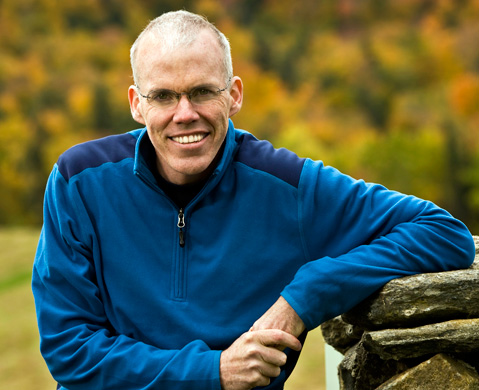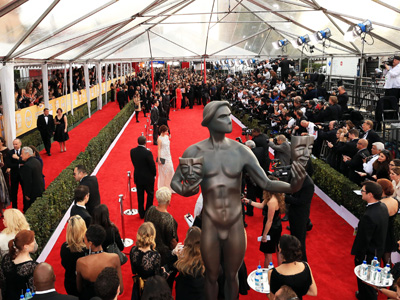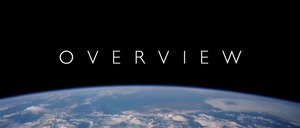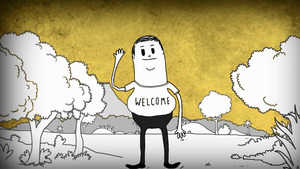CFP: Resilience: A Journal of the Environmental Humanities
A CALL FOR ESSAYS ON TEXTS THAT CALLED TO YOU
What catalyzes the relationship between the humanities and ecological awareness? How does the critical imagination learn to account for the different varieties of what counts as “the environment� What are the possibilities and limits of the humanities as it seeks to converse with what has all too often been seen as a material, rather than a textual, object of study? What texts or models surprise our imaginations, and turn work in the humanities to the environment, while also deepening and expanding our idea of what counts as environmental criticism?
Resilience invites short essays of no fewer than 2K and no more than 4K words about a text – narrative or visual, ephemeral or artifactual, digital or material – that prompted you to begin to think about the environmental humanities. What texts taught you to see the possibilities of a relationship between the humanities and the environment? What text did you argue with and set aside, pick up and annotate? What text modeled a new way of thinking for you, suggested a new way of conceptualizing the human, the posthuman, the natural or built environment, the sense of place in the natural or the industrialized worlds? What text still speaks to you? What texts were you addressing as you developed your ideas? What particular line or word or image did you linger over, and why? What was the alchemical reaction between your moment of encountering a text and your ability to see a new dimension of scholarly practice in the environmental humanities?
We seek essays that are exploratory and ruminative, essays that depart from the conventional format of the academic essay. We are interested in essays that allow readers to see how you think, to follow along as you describe how you create meaningful connections between your scholarly thinking and your practices of seeing and interpreting the world around you. We welcome essays about scholarly books or essays, poetry, children’s books, photographs, news stories, film, video, blogs, art installations, political demonstrations, or found objects.
Please send contributions to resiliencejournal@gmail.com by January 15, 2014.
Lately, I been reflecting a bit on Stacy Alaimo’s plenary talk at ASLE 2013 this past June in which she discusses the Census of Marine Life project. If you haven’t yet checked out the image gallery, the video gallery, and other aspects of this project focused on quantifying the vast plethora of marine species, which was conduced between 2000 and 2010, check it out by clicking the links in this story.

Given that people have been talking lately about the environmental potentials of video games I thought this article about the uses of environment to assist with VG addiction treatment might be of interest. Click the title below to link to the full story.
Reposted from NPR.org
“When Playing Video Games Means Sitting on Life’s Sidelines”
A facility outside Seattle, surrounded by pine trees, is a refuge for addicts — of technology.
There are chickens, a garden and a big tree house with a zipline. A few guys kick a soccer ball around between therapy appointments in the cottage’s grassy backyard.
The reSTART center was set up in 2009. It treats all sorts of technology addictions, but most of the young men who come through here — and they are all young men — have the biggest problem with video games.
There are beds for seven patients at a time. After they spend six intensive weeks of rehab here, they go to a transitional situation — an apartment close by, where they live with other former reSTART patients.
That step used to be called Level 2, but program manager Rachell Montag says that was too similar to video game language, so they changed it.
“In gaming, the goal is always to be moving forward and leveling up, and so we didn’t want our language to parallel that, because it can actually have an effect on their behavior and their recovery process in that phase,” she tells NPR’s Rachel Martin.
*Political Ecologies of the Environment as Algorithm*
Dimensions of Political Ecology Conference on Nature and Society (DOPE)
Lexington, KY February 26-March 1, 2014, www.politicalecology.orgÂ
Organizer: Eric Nost, University of Wisconsin-Madison
This session will explore the relationship between software and environmental change and conflict within two overlapping thematic areas: 1) the roles played by computer code in generating ecological knowledge; 2) the use of social media in conservation and environmental activism. From Silicon Valley startups writing programs that turn satellite imagery of Amazon deforestation into data for activists and hedge fund managers alike, to scripts that coordinate “smart” meters of everything from home energy use to reservoir water levels in an “internet of things,” algorithms executed by code reshape environmental management through new techniques of visualization, displacement of existing knowledge regimes, and integration with other logics like financialization. While scholars have fruitfully developed ways of thinking about code and the making of everyday space (Kitchin and Dodge 2011), the goal of this session is to start to try to understand code’s production of nature. Building from political ecologists’ long history of investigating the creation, uses, and abuses of knowledge about particular environments, such a research program means understanding the effects of, for instance, automatic sorting algorithms, the agency and power of code, and the contexts in which algorithms are written, deployed, and evaluated. Likewise, we aim for similar themes – effects, agencies, and contexts – in papers that address the role or conspicuous absence of social media in environmental movements and conservation. NGOs, governments, and corporations all deploy strategies of, for example, enrolling citizens/consumers to share their opinion on conservation plans (B’scher 2013). This kind of use of social media has the potential to legitimate existing decision-making regimes, but, as in citizen environmental monitoring, may also open up new political possibilities. In this session we will explore how and why new technologies produce one or the other result.
Possible topics might include: – Remote sensing and environmental indicators in investment, risk assessment, and/or (re)insurance – Data collection and modelling for ecosystem service markets and payment schemes – Smart cities, Internets of Things, and continuous environmental monitoring – Use of social media for conservation planning and implementation – Open access software and/or social media in citizen science
Express interest in participating in the session by emailing nost@wisc.edu by December 2, 2013. Participants will need to submit an abstract and register at the conference website: politicalecology.org
With director Alfonso Cuarón’s Gravity lighting up the box office these past couple of weekends I thought it would be useful to post a few helpful links for thinking through the state of space ecology.
As Lynda Williams describes in her article “Space Ecology”, science and industry currently operates under a big space theory, “namely that space is so big that the waste we create in it will cause no harm.” Yet as she and others have demonstrated, orbital debris often finds its way back to earth, or creates problems for the thousands of satellites orbiting the planet. Of course, the international space station has not been obliterated by such debris (as it is in Gravity) but the U.S. military has spent billions of dollars since the early 1960s monitoring such debris, albeit for logistical rather than ecological purposes.
In September, as reported by NPR, parts of the the 50-year-old “space fence” (formally known as the Air Force Space Surveillance System) were shut down by the military due to outdated technology. At present, according to an article by Mike Gruss of SpaceNews.com, Gen. William Shelton, Commander of Air Force Space Command, explains that a series of stop-gap measures is allowing the US military to effectively track its “space assets”.
The video embedded below details the efforts of aerospace and weapons manufacturer Lockheed-Martin to develop a new system, due to come on-line in 2018. As you get caught up in the human drama and astounding 3D imagery of Gravity, keep in mind that space ecology will continue to be an important issue involving funding, resource consumption, waste management, geopolitics, engineering, and human imagination.
EMA has announced the honorees and nominees for the 23rd Annual Environmental Media Awards, happening on Saturday, October 19th!
The 23rd Annual EMA Awards will stream LIVE on October 19 beginning at 5:30pm PT at Facebook.com/EMAOnline and ema-online.org. Click here to read more about the 23rd Annual EMA Awards.
Matt Damon
EMA Board of Directors Ongoing Commitment Award

EMA Lifetime Achievement Award

EMA Green Parent Award
 Hayden Panettiere
Hayden PanettiereEMA Futures Award

Green Production Award


2013 EMA Award Nominees
| FEATURE FILM | |||||||||||
The East |
The Guilt Trip |
Promised Land |
|||||||||
| DOCUMENTARY FILM | |||||||||||
Gasland Part II |
Greedy Lying Bastards |
Harmony: A New Way of Looking at Our World  |
|||||||||
| TELEVISION EPISODIC DRAMA | |||||||||||
| Castle “Cloudy with a Chance of Murder”  |
Dallas “The Furious and the Fast”  |
House of Cards, Chapter 9  |
|||||||||
| TELEVISION EPISODIC COMEDY | |||||||||||
| Last Man Standing “Mother Fracker”  |
Modern Family “When a Tree Falls”  |
Portlandia “Off the Grid”  |
|||||||||
| REALITY TELEVISION | |||||||||||
| Real Time With Bill Maher, Episode 1110  |
Shark Tank, Episode 415  |
VICE, “Gangs & Oil”  |
|||||||||
| CHILDREN’S TELEVISION | |||||||||||
| Eco Company “The Big Green Bus”  |
Nick News With Linda Ellerbee “What’s the Deal With Fracking?”  |
Tree Fu Tom “Tom’s Big Mess”  |
|||||||||
 Overview
Overview

If you happen to be in the Pacific Northwest in a few weeks you may want to check out the Environmental Humanities Conference at the University of Washington in Seattle.
The Future of the Environmental Humanities: Research, Pedagogies, Institutions, and Publics
This multi-day conference (Oct. 31-Nov. 3, 2013) seeks to spark the emergence of a regional network of environmental humanities scholars who will  come together to understand how the humanities may contribute to civic conversations about environmental change and to better define the place that the academic humanities have in this process.
For a complete list of panelists and more information about the conference head to:Â www.simpsoncenter.org/environmental-humanities
The conference’s keynote addresses are free and open to the public.
Lawrence Buell (English, Harvard)
Walker Ames Lecture*: Environmental Imagination at the Crossroads
Thursday, October 31, 2013, 6:30 pm, Kane 110
*Registration required at: http://www.grad.washington.edu/lectures/lawrence-buell.shtml
Earth seems to have entered a new geologic era–the Anthropocene–in which humankind has become the primary driver of global  environmental change for the first time in history. Though we can’t yet be certain, humankind may also be in the early stages of a new Copernican revolution in environmental ethics to address the potentially dire consequences of this. To that end, literature and all other expressive arts can be a powerful resource for reinvisioning humanity’s place on earth. Five specific major resources of this kind will be identified and discussed, with examples drawn from a wide range of recent literary works from around the world. Lawrence Buell will also take note along the way of several characteristic hazards that threaten to–but need not–perplex or neutralize environmental imagination’s potential as an ethical-aesthetic resource.
Ursula Heise (English, University of California, Los Angeles)
Environmental Humanities in the Anthropocene: Humans, Posthumans, and Other Endangered Species
Friday, November 1, 2013, 4:30 pm, Communications 120
The environmental humanities are currently emerging as a new interdisciplinary matrix from what have so far been distinct disciplinary trajectories in environmental history, ecocriticism, environmental philosophy, biological anthropology, cultural  geography, and political ecology. The concepts of the “Anthropocene†and “posthumanism†offer potential hinges to connect these diverse areas. But whereas debates about the Anthropocene have foregrounded humans’ new centrality to planetary nature because of their pervasive and enduring impact, several varieties of posthumanism and multispecies ethnography have on the contrary sought to displace the liberal human subject from its central place in philosophy, sociology, and politics. In this lecture, Ursula Heise discusses what difficulties and possibilities arise from this tension for envisioning the new field of environmental humanities and explores as an exemplary case current thinking about biodiversity and endangered species.
What is Documentary? Yesterday, Today & Tomorrow?
24-26 April 2014
U of Oregon | Portland, Oregon
Documentaries continue to play important roles in defining, exposing, and transforming social realities. Today, we are witnessing an explosion of documentary making enabled by new digital production and distribution technologies, even as traditional news media may seem compromised and in decline.
We will gather at the University of Oregon’s Portland campus from April 24-26, 2014, to explore the past, present and future of documentary in all its forms. The conference will feature a unique coalescing of media scholars and students, media professionals, independent media producers, government and community officials, as well as interested community groups and the public. The event will feature keynote speakers, roundtables, paper presentations, and screenings, in an attempt to answer questions about the changing nature of documentary.
We welcome proposals that address any and all forms of documentary – film, video, radio, audio, photography, print, digital media, online, etc. We especially welcome paper/presentation proposals on the following topics (as well as others):
- How do we define documentary? by form? by content? by practice? by distribution outlets?
- How is the history of documentary relevant to the 21st century?
- What are the new forms of documentary?
- How have digital technologies shaped/reshaped the production and distribution of documentaries?
- What are the old and new theories that sustain or explain documentary practice?
- What role should documentary media play in society?
- Is reality television a new form of documentary?
- Does user-generated communication and self-documentation change our understanding of documentary?
- How do documentaries fit into media industries?
- Are there new developments in the funding of documentaries?
- What is the relationship of documentary and journalistic practices?
- What is the role of documentary in social change/social movements?
- How does documentary shape or anchor historical and collective memory?
- How have new digital technologies affected the production/ distribution/reception of documentaries around the world?
- How have indigenous societies used documentaries?
Send 250-word proposals by 1 November 2013, to:
Janet Wasko (jwasko@uoregon.edu) or Gabriela Martinez (gmartine@uoregon.edu)
School of Journalism and Communication
University of Oregon
